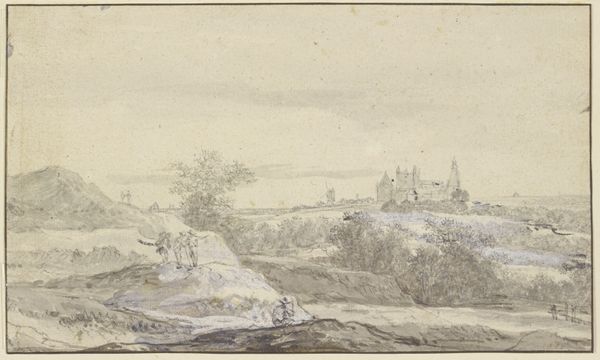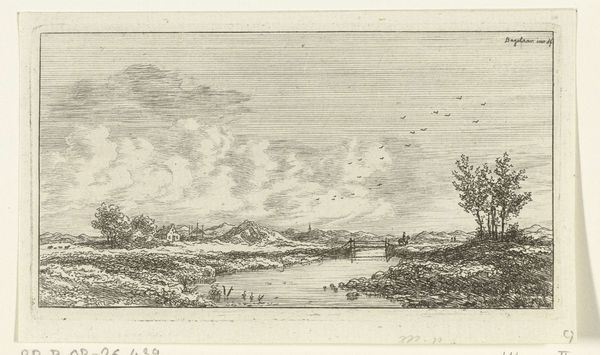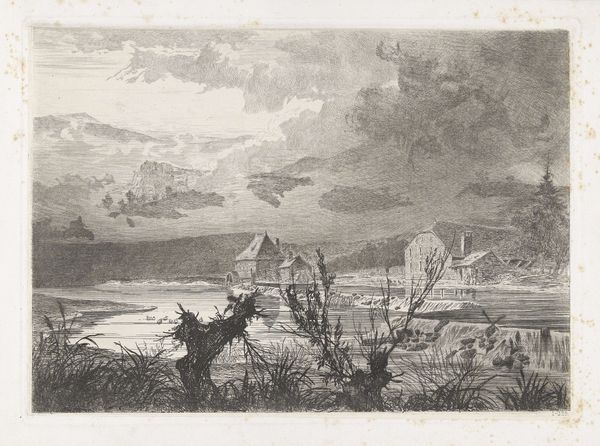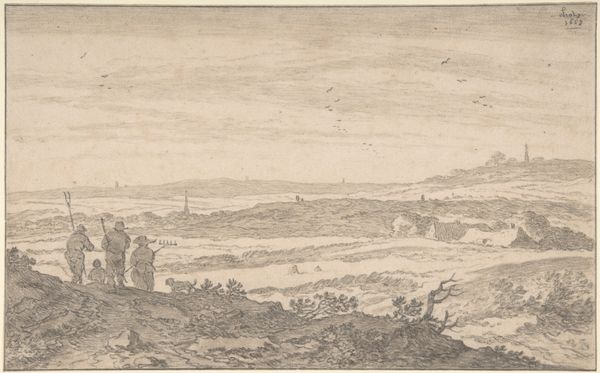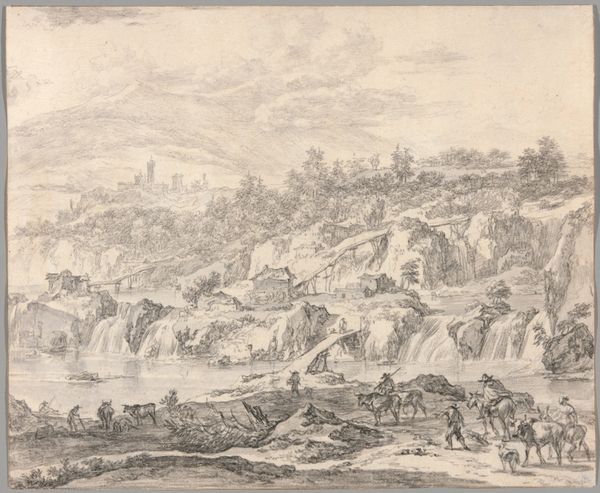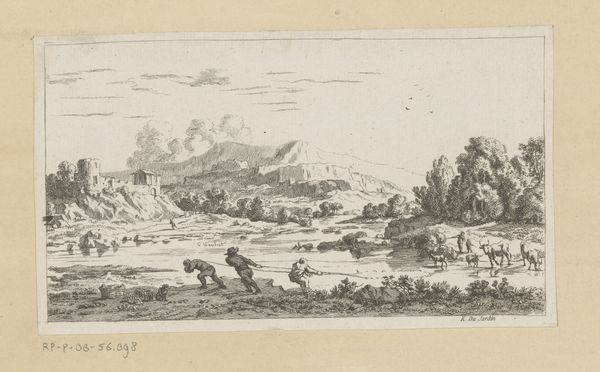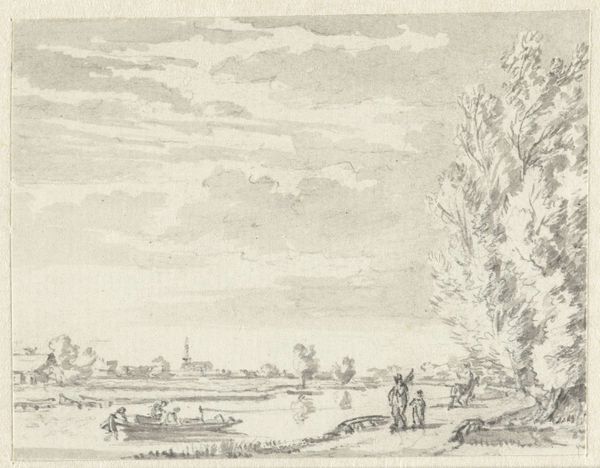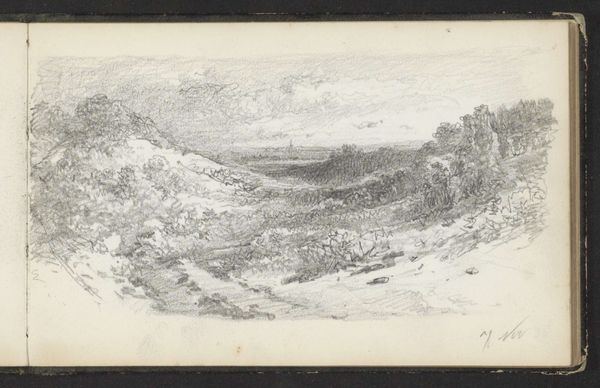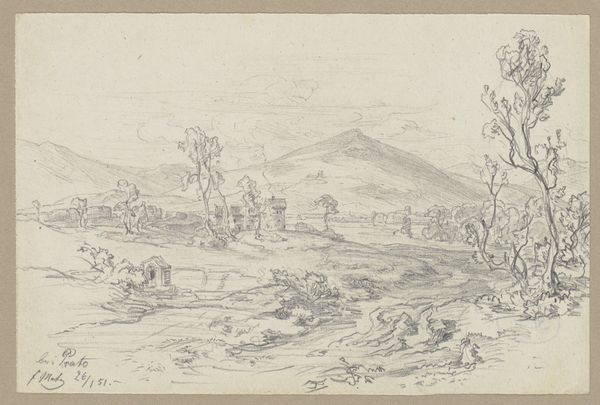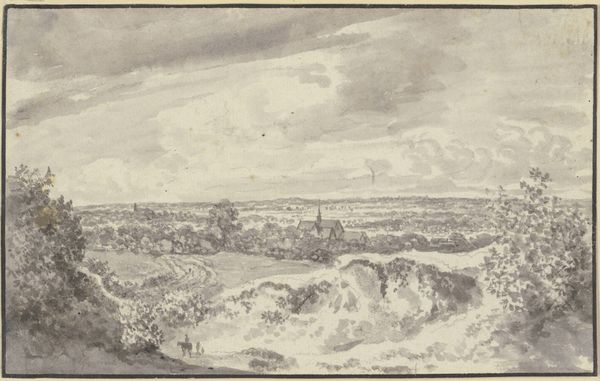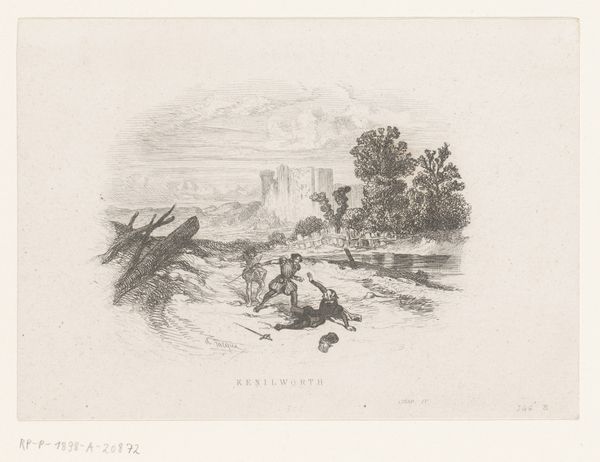
Copyright: Rijks Museum: Open Domain
Editor: This pencil drawing, "Heuvellandschap met bomen," which translates to "Hilly Landscape with Trees," was created around 1863-1864 by Maria Vos. The softness of the pencil strokes and the simple composition give it a very calming feel, almost melancholic. What stands out to you about this piece? Curator: The landscape itself, rendered with such delicate lines, speaks to the romanticism of nature, but there's something more at play. Think of landscapes, not just as visual records, but as containers of memory, both personal and collective. How do these trees, the slight undulation of the hills, echo the Dutch national identity forming at that time? What visual language connects to the rise of national awareness in the mid-19th century? Editor: I hadn't considered the national identity aspect. So, the way Vos portrays the landscape is not just about the beauty of the place, but also about…belonging? Curator: Precisely. Consider the symbolism often associated with the landscape. Trees frequently represent strength, resilience, roots - a connection to the past. The deliberate composition encourages the viewer's eye to wander, almost inviting a contemplation of place and self within it. Do you see how she uses a limited tonal range to invoke memory and mood? Editor: Yes, I notice that now. It is very subtle, and I was not aware of the historical perspective or how Vos was using that symbolic language. I just thought it was a pretty drawing. Curator: And that’s perfectly valid! It’s also a demonstration of the powerful layers of meaning embedded within seemingly simple images, if you know how to look. Every stroke contributes to the collective story of the landscape as a national emblem. Editor: I’ll definitely remember that as I keep exploring and learning. Thank you.
Comments
No comments
Be the first to comment and join the conversation on the ultimate creative platform.
